팝업레이어 알림
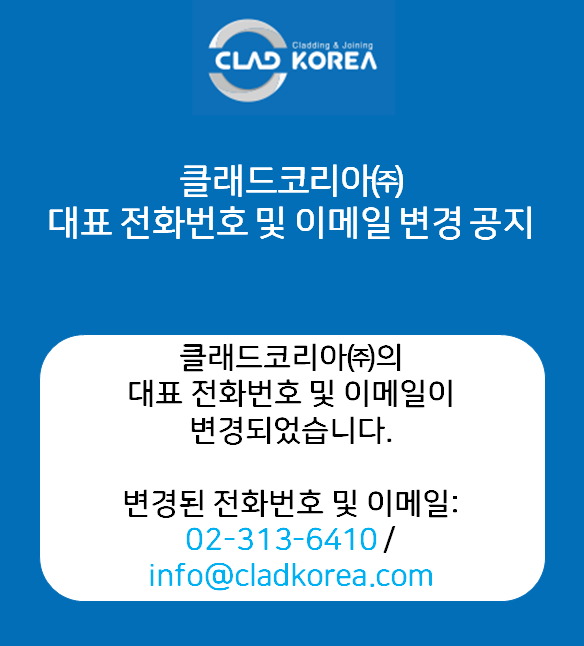
World's Highest Quality Welding Materials and Welding Construction,
Korea's first industry company to produce Clad Pipe.
Clad Korea is a global company with infinite potential.
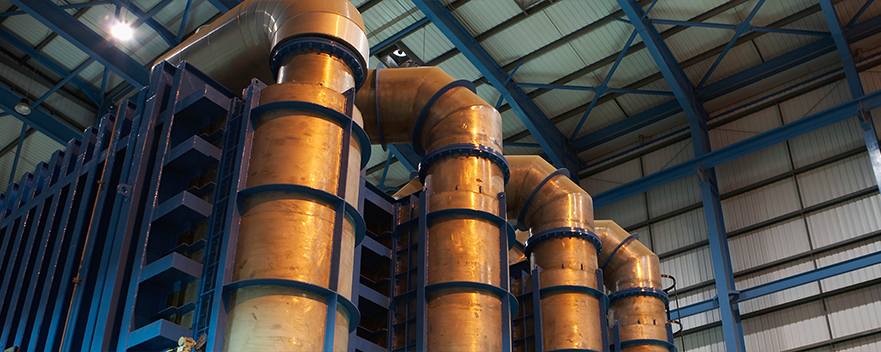
Welding method
Surface cleanliness
Welding design
Preheating and interlayer temperature
Cladding welding
| Cladding | Filler | Preheating min. °C | Interpass temp.max. °C |
|---|---|---|---|
| 13% Cr-steels | Austenitic Matching |
- 150 |
200 250 |
| CrNi-steels | Matching | none | 150 |
| Ni and Ni-alloys | Matching | none | 150 |
| Cu | Matching | > 400 | 600 |
| CuNi and NiCu-alloys | Matching | none | 150 |
| Ti | Matching | none | 100 |
Stress removal annealing
Cladding postprocessing
Since the smooth handling of the weld bead prevents formal corrosion and prevents discoloration by Pickling, postprocessing similar to the flattening of the cladding according to the material and the corrosion medium must be considered.
Shape of welds
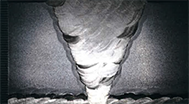
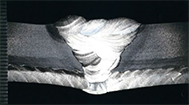
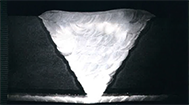


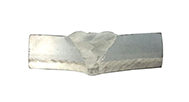
| Cladding | Filler Metal Type | Sing - Pass ESSC (SASC) Strip | |||||
|---|---|---|---|---|---|---|---|
| Alloy Type | EN Material Number |
Multi-Pass (GTAW, FMAW, FCAW) | |||||
| Buffer - EN/ISO | Buffer - AWS | Subsequent Passes - EN/ISO | Subsequent Passes - AWS | ||||
| Alloy 800 | 1.4539 | 23 12L | 309L | 20 25 5 CuL | 385 | NI 66 25 (NiCr-22Mo9Nb) | NiCrMo-3 |
| Alloy 904L | 1.4876 | NI 66 25 (NiCr-22Mo9Nb) | NiCrMo-3 | NI 66 25 (NiCr-22Mo9Nb) | NiCrMo-3 | NI 66 25 (NiCr-22Mo9Nb) | NiCrMo-3 |
| Alloy 28 | 1.4563 | 23 12L | 309L | 27 31 4 CuL | 383 | NI 66 25 (NiCr-22Mo9Nb) | NiCrMo-3 |
| Alloy 926 | 1.4529 | NI 66 25 (NiCr-22Mo9Nb) | NiCrMo-3 | NI 66 25 (NiCr-22Mo9Nb) | NiCrMo-3 | NI 66 25 (NiCr-22Mo9Nb) | NiCrMo-3 |
| Alloy 20 | 2.4660 | NI 66 25 (NiCr-22Mo9Nb) | NiCrMo-3 | NI 66 25 (NiCr-22Mo9Nb) | NiCrMo-3 | NI 66 25 (NiCr-22Mo9Nb) | NiCrMo-3 |
| Alloy 825 | 2.4858 | NI 66 25 (NiCr-22Mo9Nb) | NiCrMo-3 | NI 66 25 (NiCr-22Mo9Nb) | NiCrMo-3 | NI 66 25 (NiCr-22Mo9Nb) | NiCrMo-3 |
| Alloy 625 | 2.4856 | NI 66 25 (NiCr-22Mo9Nb) | NiCrMo-3 | NI 66 25 (NiCr-22Mo9Nb) | NiCrMo-3 | NI 60 59 (NiCr-23Mo16) | NiCrMo-13 |
| Alloy C22 | 2.4602 | NI 60 22 (NiCr-21Mo13W3) | NiCrMo-10 | NI 60 22 (NiCr-21Mo13W3) | NiCrMo-10 | NI 60 22(NiCr-21Mo13Fe4W3) | NiCrMo-10 |
| Alloy C4 | 2.4610 | NI 64 55 (NiCr-16Mo16Ti) | NiCRMo-7 | NI 64 55 (NiCr-16Mo16Ti) | NiCrMo-7 | NI 64 55 (NiCr-16Mo16T1) | NiCrMo-7 |
| Alloy C276 | 2.4819 | NI 64 55 (NiCr-16Mo16Ti) | NiCRMo-7 | NI 64 55 (NiCr-16Mo16Ti) | NiCRMo-7 | NI 62 76(NiMo-16Cr15Fe6W4) | NiCrMo-4 |
| Alloy 59 | 2.4605 | NI 60 59 (NICr-23Mo16) | NiCrMo-13 | NI 60 59 (NICr-23Mo16) | NiCrMo-13 | NI 60 59 (NiCr-23Mo16) | NiCrMo-13 |
| Alloy B2 | 2.4617 | - | - | - | - | NI 64 55 (NiCr-16Mo16Ti) | NiCrMo-7 |
| Alloy 600 | 2.4816 | NI 60 82 (NiCr-20Mn3Nb) | NiCr-3 | NI 60 82 (NiCr-20Mn3Nb) | NiCr-3 | NI 60 82 (NiCr-20Mn3Nb) | NiCr-3 |
| Alloy 400 | 2.4360 | NI 40 60 (NiCu30Mn3Ti) | NiCu-7 | NI 40 60 (NiCu30Mn3Ti) | NiCu-7 | NI 40 60 (NiCu30Mn3Ti) | NiCu-7 |
| Alloy 200 | 2.4066 | NI 20 61 (NiTi3) | Ni-1 | NI 20 61 (NiTi3) | Ni-1 | NI 20 61 (NiTi3) | Ni-1 |
| Alloy 201 | 2.4068 | NI 20 61 (NiTi3) | Ni-1 | NI 20 61 (NiTi3) | Ni-1 | NI 20 61 (NiTi3) | Ni-1 |
| SE-Cu | 2.0070 | NI 40 60 (NiCu30Mn3Ti) | NiCu-7 | NI 40 60 (NiCu30Mn3Ti) | NiCu-7 | Welding of Cu and Cu -Alloys on to carbon steel without buffer layer is not recommended. | |
| SF-Cu | CW024A | NI 40 60 (NiCu30Mn3Ti) | NiCu-7 | NI 40 60 (NiCu30Mn3Ti) | NiCu-7 | ||
| Alloy CuNi 90/10 | CW352H | NI 40 60 (NiCu30Mn3Ti) | NiCu-7 | NI 40 60 (NiCu30Mn3Ti) | NiCu-7 | ||
| Alloy CuNi 70/30 | CW354H | NI 40 60 (NiCu30Mn3Ti) | NiCu-7 | NI 40 60 (NiCu30Mn3Ti) | NiCu-7 | ||
| Titanium Grade 1 | 3.7025 | Titanium must not be diluted with steel, therefore only batten straps | 3.7025 | ERTi-2 | - | - | |
| Titanium Grade 2 | 3.7035 | 3.7035 | ERTi-3 | - | - | ||